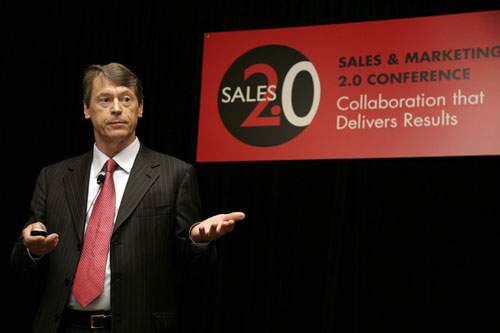
By Donal Daly
The “commit theory” of sales forecasting – in which salespeople commit that their deals are on track to close – is in need of improvement. The “commit paradigm” rarely delivers the expected results.
One of the issues is that the confidence salespeople feel about the outcome of a deal can be based more on intention, subjective assessment, and pressure from their managers to achieve – rather than collaboration with their customer on when they need a solution to their business problem.
Accountability is good, and having a grasp on future outlook is important for business – but the over-emphasis on commitment can totally undermine a good sales practice, alienate skilled salespeople, and even jeopardize customer relationships.
Sales works only where there’s trust. That means there needs to be trust between salespeople and their customers – and also internal trust between salespeople and management. Inaccurate information, even if not given deliberately, can wear away at that trust, which is hard on both managers and on sales reps themselves.
But it doesn’t have to be that way. There are strategies sales managers can execute that make for more accurate forecasts, without the need for speculation or putting pressure on reps to make commitments on deals they are not ready to make.
Four Forecasting Strategies Better than a Vague Commitment
- Study history. Looking at past information is one of the best ways to get a feel for the future. Considering the team’s quota – as well as the number of deals closed, in process, or projected – is a fantastic way to identify patterns and recognize trends. This may seem like an extremely intuitive step, but many organizations still miss it. It’s easy to do, and extremely illuminating when organizations are forecasting. Past performance, put in the right context, is one of the clearest indicators we have of future achievement.
- Implement a standard sales process. Having one single, universal procedure for the entire team to follow minimizes confusion and creates a more objective basis for an activity that can often feel very interpretive. This process should be based on customer-verifiable outcomes and specific evidence, which most organizations already measure. The more sales leaders tie in hard metrics and solid practices, the more likely their teams will adhere to a more reliable program.
- Build an early warning system. At any given moment, there’s a lot going on in a sales organization, and it’s easy to lose sight of important details in the flood of data and activity salespeople encounter on a daily basis. Having a system in place to spot risks and highlight inactivity, deal slippage, or other factors sets sales managers up with more realistic expectations about whether a deal will close from the very beginning, so that – when forecasting time comes around – they’ll have a better lens through which to examine their pipeline.
- Decide where to focus. Not all deals are equal and, unless priority is given to the “must win” deals to make the forecast and the quarter, the risk is that deals will slip and the organization as a whole may suffer. Each deal in the forecast should be categorized as a “must win now,” “must develop for next quarter,” or “qualify out” – so the focus is clear. These categorizations help guide salespeople to make stronger decisions about their opportunities without putting them in the position of speculating about them on their own.
Forecasting is a useful tool to predict and measure future pipeline, but it must be accurate to be effective. Rather than asking salespeople to come up with estimates based on subjective estimates and personal judgments, sales managers who take a thoughtful approach to evaluating their pipelines will be in a stronger position than those who don’t.
 CEO, founder, and author of Amazon number one best-seller Account Planning in Salesforce, Donal Daly combines his expertise in enterprise software applications, artificial intelligence, and sales methodology as he continues to transform how progressive organizations sell. The TAS Group is Donal’s fifth global business enterprise.
CEO, founder, and author of Amazon number one best-seller Account Planning in Salesforce, Donal Daly combines his expertise in enterprise software applications, artificial intelligence, and sales methodology as he continues to transform how progressive organizations sell. The TAS Group is Donal’s fifth global business enterprise.





 A lot of sales leaders let old myths about hiring get in the way of finding superstar candidates.
A lot of sales leaders let old myths about hiring get in the way of finding superstar candidates. Susan McGinnis is a Senior Corporate Sales Trainer at
Susan McGinnis is a Senior Corporate Sales Trainer at 



